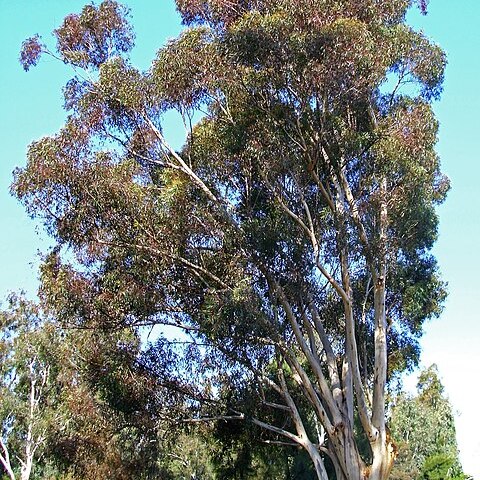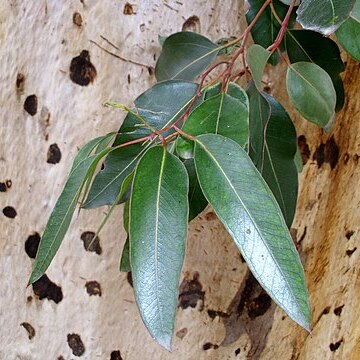Tree to 35 m. Adult leaves lanceolate; lamina 11–15 cm long, 2–2.5 cm wide; lateral veins clearly visible, at 40°–50°; intramarginal vein 1–2 mm from margin; petiole quadrangular, 12–21 mm long. Peduncle terete, 10–17 mm long; pedicels 2–7 mm long. Operculum 3–4 mm long, c. 5 mm wide; hypanthium 7–8 mm long, 4–5 mm wide. Fruits 9–16 mm long, 6–10 mm wide.
Tree to 35 m. Adult leaves lanceolate; lamina 11-15 cm long, 2-2.5 cm wide; lateral veins clearly visible, at 40°-50°; intramarginal vein 1-2 mm from margin; petiole quadrangular, 12-21 mm long. Peduncle terete, 10-17 mm long; pedicels 2-7 mm long. Operculum 3-4 mm long, c. 5 mm wide; hypanthium 7-8 mm long, 4-5 mm wide. Fruits 9-16 mm long, 6-10 mm wide.



